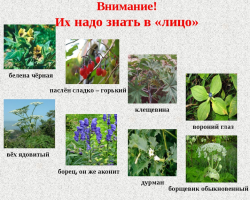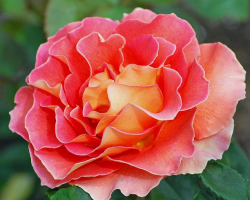Growing rosemary is a simple process, but the plant needs good care. Read more in the article.
Content
- Description of the plant Rosemary: General information
- Rosemary plant: species and varieties
- Properties of rosemary: harm and benefit
- Video: Rosemary - therapeutic properties and contraindications
- Rosemary planting for growing in open ground
- The deadlines for planting rosemary in different regions of Russia, Belarus, Ukraine
- How to grow rosemary in open ground: Features of care in winter
- The main features of rosemary care during cultivation: Pruning
- Watering rosemary when growing in open ground
- Rosemary top dressing on open ground
- What to plant after rosemary?
- Propagation of rosemary when growing in open ground: seeds, seedlings
- Video: Rosemary. Propagation and growing
- Pests and diseases of rosemary, which grows in open ground: how to protect the plant?
- Video: Secrets of Rosemary. How to grow useful spices from cuttings and seeds?
Rosemary is a flowering plant that has established itself as a beautiful spice, so it is widely used in cooking. And it also gives excellent flowering and extraordinary aroma. For these reasons, many summer residents prefer to independently grow this culture in the garden or in the garden. And there is absolutely nothing in this, you only need to observe a few important, but rather simple rules.
Read the article on our website about lavender - landing and care in open ground. You will find a lot of useful instructions, photos and videos.
This article describes what types and varieties of rosemary exist, what is its benefit and harm, as well as a lot of other useful information. Read further.
Description of the plant Rosemary: General information

Rosemary is an evergreen shrub or half -brushed out of the families are clear. The Latin version of the translation of the name of the plant has a melodic sound - "Sea freshness". However, the shrub has no iodide smell. Rather, it has a pine and camphor aroma.
As for the physical parameters of the rosemary, they can be characterized as follows:
- This shrub grows in height from 50 cm to 200 cm.
- Its roots penetrate deep into 3-4 m.
- Young shoots are distinguished by a stupid-grained shape and light gray.
- More old shoots acquire a dark gray tint and a wooden structure with a peeling bark.
Green mass (leaves) in the plant is linear, sedentary, leathery. The leaf edges are bent down, in length, they reach 3.5 cm, by width - 4 mm. The upper part of the leaves is smooth and shiny, and the lower is pubescent.
Plant flowers are painted in a dark or light purple hue, but they can be white. Together, they form large, thick panicles.
Rosemary plant: species and varieties
Different varieties of this culture can be cultivated, but the most common type is medicinal rosemary, the features of which were described above. Although he has subspecies, among which:
- Benendea Blue. This is a rather compact, erect, miniature bush, crowned with arched shoots.
- Albiflorus. This is the name of rosemary, blooming white.
- Roseus. Already by name you can guess that the color of this type of rosemary is pink.
- Seven SI, Taskin Blue. Pretty miniature varieties of rosemary. In height, such bushes can achieve only 50 cm.
Rosemary has an ordinary variety called Prostratus. The alternative name is rosemary outstretched. Its height is approximately 50 cm, but in width he is able to grow up to 1.5 m. The leaves of this plant have an unusual appearance. In their appearance, they resemble pine needles. They are painted in juicy green, have a dense consistency, differ in fleshy. A white vein is clearly visible in the center.
The color of the rosemary is open bluish or lilac. Flowers have small or medium sizes. In gardening, this rosemary variety is often used as a groundcover.

Rosemary Prostratus also has several most popular species:
- Corsica
- Ventsano
- Rosemary creeping
There are also lavender rosemary. It is characterized by slow growth, blue flowering and small leaves of bright green color. For home growing, choose any variety you like.
It is worth knowing: Rosemary is very easily grown at home and in open ground. It does not require special care, and is characterized by high resistance to phytopathology.
Properties of rosemary: harm and benefit
The plant is popular not only in cooking, gardening and landscape design. It has long been known for its beneficial properties, due to which it is used in non -traditional medicine. What is the benefit of this plant?
Therapeutic properties of rosemary- Culture is distinguished by a large spectrum of therapeutic properties, among which:
- Choleretic
- Antioxidant
- Anti -inflammatory
- Hypertensive
- Invigorating
- Regenerative
Thanks to this list of therapeutic abilities of rosemary, in medicine this plant is used for:
- General exhaustion of the body
- Rheumatism
- Menopausal disorders
- Radiculitis
- Sexual impotence
- Hypotonic disease
- Cold pathologies
- Individual heart violations
- Obesity and cellulite
- Disruptions in the operation of the circulatory system
In addition, the plant fights perfectly with the aging of the body. For this reason, it is quite advisable to use it in home cosmetology. The most valuable product is the rosemary oil. It is used in the treatment:
- Furunculosis
- Acne
- Eczema
- Infected wounds
The product is obtained when processing young shoots, flowers and leaves of culture. In this case, the method of steam processing of these parts of the plant is used.
Despite all the benefits of rosemary, it can be harmful to health with individual intolerance or allergies. In this case, it is forbidden to use such a plant inside. Also, do not use rosemary in the presence of contraindications. They include:
- The period of pregnancy
- Epilepsy
- A tendency to convulsive attacks
- Hypertension and arterial hypertension
- Individual intolerance to the components contained in the composition of the plant
Rosemary is also prohibited for children up to 9 years. This applies not only to greenery, but also of any means that are obtained from raw materials - oil, infusions, extracts, etc.
Video: Rosemary - therapeutic properties and contraindications
Rosemary planting for growing in open ground

The main condition for successful cultivation of rosemary is a right and successfully selected place for diving seedlings. Such is the sunny zone protected from drafts and wind. As for the composition of the substrate, it is desirable that it be lime, loose and light. No less important is the full drainage of the Earth.
The planting of seedlings is best done at 3-4 weeks of May. By this time, seedlings will reach 7-8 cm growth in length, and will be able to root well in the soil. If you are going to grow large cultural bushes, then plant seedlings at a distance 50 cm From each other. If a large -scale propagation of the plant is not planned, then enough and 10 cm Gap from the bush to the bush in open ground.
Important:After diving, do not forget to water seedlings!
The deadlines for planting rosemary in different regions of Russia, Belarus, Ukraine

AT middle lane of Russia (suburbs, Leningrad region, Samara, Volgograd, etc.) Rosemary planting timing is the end of May. It is important that the soil warms up and there are more sunny days on the street than cold and rainy. Gardeners also adhere Belarus.
In more warm regions (Krasnodar, Crimea) you can put this seasoning in early May. At this time, in the southern regions, it is already warm not only during the day, but also at night. The earth is warmed, the sun shines brightly during the day. AT Ukraine The plant is planted in open ground also at this time. Many gardeners, during warm spring, plant rosemary in the soil in late April.
On the Urals Gardeners grow a plant in the same way as in other regions. Just put the seedlings in open ground a little later - the beginning of June. At this time, the earth is already warmed up, and the air temperature does not fall below 12 ° C. In Siberia, it is colder, so the seasoning is grown only in pots on the windowsill or in heated greenhouses.
How to grow rosemary in open ground: Features of care in winter
Rosemary is not considered a whimsical plant. It grows perfectly in open areas, but he also needs care. Nevertheless, this process will not take you a lot of effort or time. It is enough just to perform basic procedures that will help the culture develop, and also protect it as much as possible on the open ground from the invasion of harmful insects. Features of care in winter:
- As mentioned above, Rosemary does not tolerate low temperatures, and, for example, he may not survive the winter near Moscow.
- For this reason, when cold, it is recommended to transplant it to the container of the desired volume and width, and transferred to the room where the air temperature is at the level +16 ° C.
- If for any reason you cannot do this, then perform the pruning of the bush at the level of the soil surface. Pour it on top with dry sawdust or leaves. And around the bush, make a small tent of spruce spruce or pine branches.
How is pruning correctly? Read further.
The main features of rosemary care during cultivation: Pruning

Through 7 days After diving rosemary seedlings in the ground, pinch the top of the shoots from the culture. This is necessary in order to stimulate the process of formation of full -fledged bushes. But keep in mind that for the first time rosemary will give flowering only a year after planting in the soil.
When the culture reaches the age of two, do not forget to cut last year's growths. Every April needs to do this, excising all the shoots at a level of land. But this is only if it comes to a straight -growing rosemary. You do not need to cut the outstretched variety of plants.
Remember: once every 7 years Carry the anti -aging pruning of the bushes. It is also best done in the spring.
Watering rosemary when growing in open ground
Rosemary stands steadily, but, nevertheless, you should not bring the situation to the extreme. Therefore, provide the plant with moderate watering, since excess moisture also affects it quite poorly. In such circumstances, the leaves begin to fall, and the roots - rotten. But with a lack of liquid, the leaves become yellow and lethargic.
Watering under the root. Do not allow water to enter the leaves, as this increases the risk of mold on their surface.
Rosemary top dressing on open ground
To gain green mass, the plant needs nitrogen fertilizers. After their single use, combined minimizing should be made. Do this every month during the entire period of vegetation of the shrub.
In the autumn period, use only those top dressing that do not contain nitrogen. At this time, the plant requires another element - phosphorus. Therefore, use drugs with its increased content.
What to plant after rosemary?
Rosemary transplant or complete removal of the bush is an optional procedure. It can be performed at will, but in the place of the plants “correct” cultures should be planted or sown. According to crop rotation, after plants that are valuable to the ground part, it is worth planting crops that have tubers. Therefore, the uprooted shrubs of rosemary can be replaced:
- Garlic
- Carrots
- Onions
- Beetroot
- Potatoes, etc.
After removing the bush, make sure that the earth is completely cleaned, and there are no residues of the roots or shoots of the plant anywhere. Then dig the site and apply fertilizer into it. The usual humus or compost is suitable.
Propagation of rosemary when growing in open ground: seeds, seedlings

The most common way of breeding rosemary when growing in open ground is seed. That is, several rosemary bushes can be cultivated at once. But this is not the only option. You can also increase the number of shrubs using seedlings, which is done through:
- Cherishing
- Layering
- Divisions
Each of these methods has its own characteristics and secrets. Consider them so that the works are given a positive result.
Cherishing:
- For the propagation of rosemary, the method of cuttings must be waiting for the onset of autumn. Work is best done in September or October.
- From annual shoots, cut small segments. It is enough for their length to be 8-10 cm, and three or four internodes.
- Free the lower parts of the wrapping from green mass, lower the cut place into the root stimulator.
- Then plant the resulting cuttings in a container with a light, slightly loose, well -drained, and most importantly with sterile soil. It can be a peat combined with vermiculite.
- Place the seedlings in heat, and do not allow sunlight.
Remember that the substrate in the container should be in a moisturized state. Also do not forget to spray the cuttings yourself daily. When the fresh green mass appears on their surface, put them on separate pots with a diameter from 7 to 9 cm. After 7 days Take the top of the tops on the cuttings - this is important for stimulating the branching process.
Propagation with layering:
- The principle of applying this method of propagation of rosemary is also quite simple.
- Tilt to the ground with the lowest growing shoot of the bush and secure it reliably.
- Dig it slightly, but do it so that the top is above the soil surface.
- Water the formed layering along with the main bush.
- The soil that covers it must be slightly wet.
- When you notice that the top began to grow, separate the layering from the mother bush and plant it on the bed or in a small flower pot.
Reproduction by division:
- Typically, the division method is used in the propagation of indoor rosemary.
- All for the reason that in order to obtain planting material it is necessary to get to the roots.
- And when growing a culture in open ground, this is almost impossible.
- Therefore, it is impractical to consider this propagation method in the current case.
If you grow rosemary in open ground, then cuttings and seed method are well suited for propagation. Experienced gardeners use them.
Video: Rosemary. Propagation and growing
Pests and diseases of rosemary, which grows in open ground: how to protect the plant?

Rosemary, growing in open ground, is extremely resistant to various kinds of infections, diseases and pests. Occasionally, only he can be amazed:
- Aphids
- False powdery mildew
- Whiteflies
How to protect the plant? Here are some tips:
- You can get rid of harmful insects by soaping the green mass of rosemary.
- After that, carefully remove the running water with a stream of running water.
- But make sure that soap water does not fall on the soil, so before the procedure, cover it with a film.
- Also follow the humidity - it should not be high. Although during such manipulation in the open air, the increase in its level is practically excluded.
In special stores, you can buy funds to combat pests and diseases of plants. Read to another article on our website, how to process the garden and garden in the spring.
But you can use folk recipes. For example:
Try to use natural safe means to process this plant. After all, you will use leaves as a seasoning or medicine, and treating with toxic pesticides to nothing.
Propagate the culture in different ways, and it grows perfectly in open soil or in the house. And with its wonderful flowering and an unusual aroma, culture was justified by the love of many gardeners. Do you grow at home or in the garden rosemary? What secrets do you use to care for it? Please write in the comments.
Video: Secrets of Rosemary. How to grow useful spices from cuttings and seeds?
Read on the topic:







